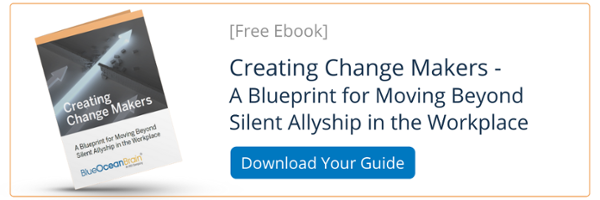There is a lot of talk about diversity, equity, and inclusion (DEI) these days, but, unfortunately, not as much action. DEI training has been taking place in companies of all types and sizes for years, yet issues persist. Most companies admit they have not reached their DEI goals, and their culture is not quite where they want it.
It is time for action, and people leaders are vital to achieving culture shifts. There are several specific things that your people leaders can do to help jump-start DEI initiatives. And, yes, talking is one of them! But they need support. HR, learning, and diversity leaders are in a powerful position to help their people leaders develop a strong DEI culture. People leaders can use specific DEI activities to jump-start their 2022 DEI initiatives at every stage of the employee life cycle—from recruiting and hiring to coaching, counseling, and professional development to building cultures of belonging and inclusion on their teams. Commit to making your people leaders aware of these activities and provide them with the support they need to achieve these DEI goals.
1) Casting a broad but focused net for talent
HR can play an important role here, working with hiring managers to ensure they are recruiting through channels likely to attract diverse candidates. Especially in an increasingly remote or hybrid environment, geography is less limiting, and candidates don't have to live down the street—they can live across the world.
In this Forbes piece, 13 members from the Forbes Coaches Council share their recommendations and sources for recruiting more diverse candidates, including advice on:
- Building relationships with diverse organizations
- Using external recruiters
- Aligning with community resources
- Engaging DEI consultants
2) Helping under-represented individuals advance in their careers
People leaders can be influential advocates for helping under-represented employees advance their careers. However, they must have the resources and support needed to help make this happen. HR and L&D leaders can help by providing easy access to learning and development opportunities.
In addition, people leaders can pave the way to personal development by offering stretch assignments and leadership experiences through opportunities to manage a team or task force, lead a project, or learn a new skill.
3) Holding active listening sessions
People leaders should be encouraged to spark dialogue with employees through company-provided education about their perspectives on inclusivity, allyship, unconscious bias, and empathy. They must know how to be intentional with their words and listen to understand. Prompt them to use clarifying questions to ensure understanding and to take steps to generate input and feedback from all employees.
Above all, encourage leaders to be courageous!

4) Having courageous conversations
DEI issues can be uncomfortable, requiring a focus on courageous conversations. Courageous conversations involve discussing nuanced and vulnerable subjects like race and privilege with your direct reports, HR, or leadership group.
People leaders can learn to initiate these conversations and effectively manage the emotions they may elicit if given guidance and training. While not easy, guiding courageous conversations helps create the psychological safety and belonging needed to build high-performing, inclusive teams.
5) Leading by example
Leaders must "walk the walk" in everything they do. Senior and HR leaders can set the stage through their behaviors. If you want your people leaders and team members to be advocates for DEI, you must model the inclusive behaviors you want them to exhibit.
6) Understanding the unique challenges posed in remote work environments
Creating and nurturing a strong DEI culture is difficult in any environment, but remote work has created additional challenges. It is much easier for employees to get "lost between the cracks" when they are not physically present in the workplace. People who are not present can be easy to overlook and ignore.
People leaders should be extra vigilant in reaching out to remote and hybrid employees to ensure they are part of employee meetings, team calls, and other interactions. It is easy to fall into communication patterns with high-performing employees or with those they may share interests. Conscious efforts to regularly reach out, one on one, to all employees can help build relationships and inclusion.
7) Teaching employees to be active allies
Everyone in your organization needs to be encouraged to speak up when they notice exclusionary behaviors or actions and to be staunch supporters—or allies—in the practice of inclusive behaviors.
Education is vital to nurture inclusive people leaders and active employee allies.
Arm your people leaders with the information and tools needed to take actionable steps to build a strong DEI culture. Take the next step toward improving diversity, equity, and inclusion by developing inclusive people leaders.
Want more DEI tactics?
As important as people may find diversity and inclusion goals, it can take time to help them feel comfortable and confident in showing allyship and truly supporting fellow team members. Moving beyond talk to action requires an innovative strategy—and we got you covered. Check out our new ebook, Creating Change Makers - A Blueprint for Moving Beyond Silent Allyship in the Workplace.





